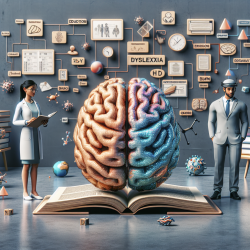Introduction
As practitioners in the field of speech-language pathology and therapy, understanding the complexities of adolescent behavior is crucial. Recent research highlights a significant relationship between problematic shopping (PS) and self-injurious behaviors (SIB) in adolescents. This blog post delves into the findings of a study conducted by Greenberg et al. (2020), which explores these behaviors' interconnectedness and offers insights for practitioners to improve their approaches.
The Study's Key Findings
The study analyzed survey data from 2,624 high school students in Connecticut, revealing that adolescents with PS had a 3.43-fold higher likelihood of endorsing lifetime SIB than those without PS. Additionally, PS was associated with elevated impulsivity and sensation-seeking traits, which are critical factors in understanding these behaviors.
Implications for Practitioners
Understanding the link between PS and SIB is essential for practitioners working with adolescents. Here are some actionable insights:
- Focus on Impulsivity and Sensation-Seeking: Recognize that adolescents with PS and SIB often exhibit higher levels of impulsivity and sensation-seeking. Tailoring interventions to address these traits can be beneficial.
- Consider Behavioral Addictions: Both PS and SIB share characteristics of behavioral addictions. Incorporating strategies that address addictive behaviors may improve outcomes.
- Enhance Coping Mechanisms: Adolescents may use PS and SIB to cope with negative emotions. Teaching healthier coping strategies can reduce reliance on these behaviors.
Encouraging Further Research
The study underscores the need for further research into the mechanisms connecting PS and SIB. Practitioners are encouraged to explore the following areas:
- Neurobiological Pathways: Investigate the shared neurobiological pathways that may underlie both PS and SIB.
- Intervention Development: Develop interventions targeting impulsivity, sensation-seeking, and emotional regulation to prevent and treat these behaviors.
Conclusion
By understanding the relationship between problematic shopping and self-injurious behaviors, practitioners can better address the needs of adolescents. Implementing data-driven strategies that focus on impulsivity, sensation-seeking, and coping mechanisms can lead to improved outcomes.
To read the original research paper, please follow this link: Problematic shopping and self-injurious behaviors in adolescents.










